Glands in the Human Body and Their Functions: Exploring the Anatomy and Role of Endocrine and Exocrine Glands
What are glands? Discover the different types of glands in the human body and their functions. Understand the role of endocrine glands in producing hormones and the purpose of exocrine glands in secreting substances like sweat, saliva, and tears.
Glands: The Unsung Heroes of the Human Body
Glands are integral organs found throughout the human body, performing a wide array of essential functions. Though often overlooked, these unsung heroes play a crucial role in regulating various physiological processes, from growth and development to metabolism and mood. In this comprehensive article, we’ll delve into the anatomy and functions of the different types of glands, providing a deeper understanding of their vital contributions to our overall health and well-being.
Endocrine Glands: The Body’s Chemical Messengers
Endocrine glands are a crucial part of the endocrine system, responsible for producing and releasing hormones directly into the bloodstream. These chemical messengers then travel to target tissues and organs, where they orchestrate a multitude of functions, including:
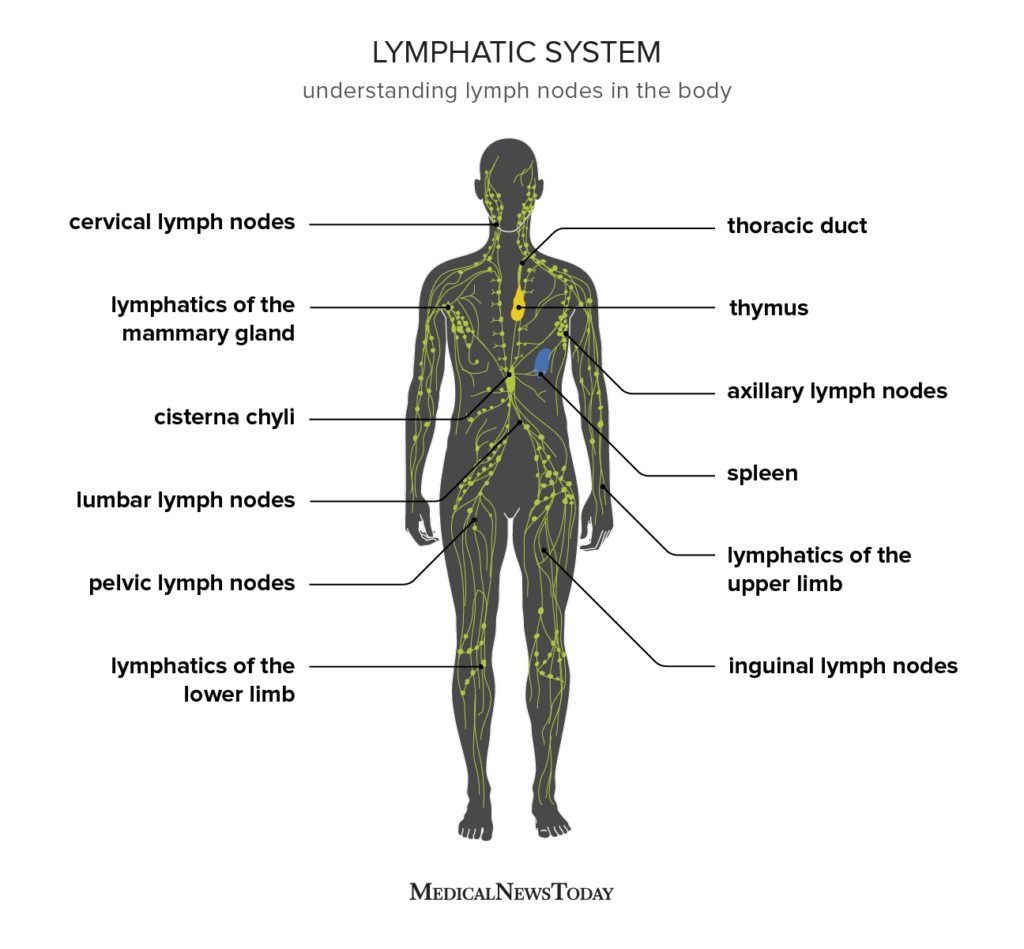
- Growth and development
- Metabolism regulation
- Mood and emotional control
- Reproductive processes
The key endocrine glands include the adrenal glands, pituitary gland, hypothalamus, thyroid, pineal gland, and the endocrine tissues within the pancreas, kidneys, ovaries, and testes.
Exocrine Glands: Secreting Substances for External Use
In contrast to endocrine glands, exocrine glands produce and release substances that are not directly transported through the bloodstream. Instead, these secretions are channeled to the exterior of the body through ducts, where they serve important functions, such as:
- Regulating body temperature through sweat production
- Protecting the skin and eyes with saliva and tears
- Facilitating breastfeeding by producing milk
Examples of exocrine glands include the salivary, sweat, mammary, and sebaceous glands.
The Thyroid Gland: Regulating Metabolism and Beyond
The thyroid gland, located in the front of the neck, is a prime example of an endocrine gland with far-reaching effects. This butterfly-shaped organ secretes hormones that influence virtually every tissue in the body, playing a crucial role in:
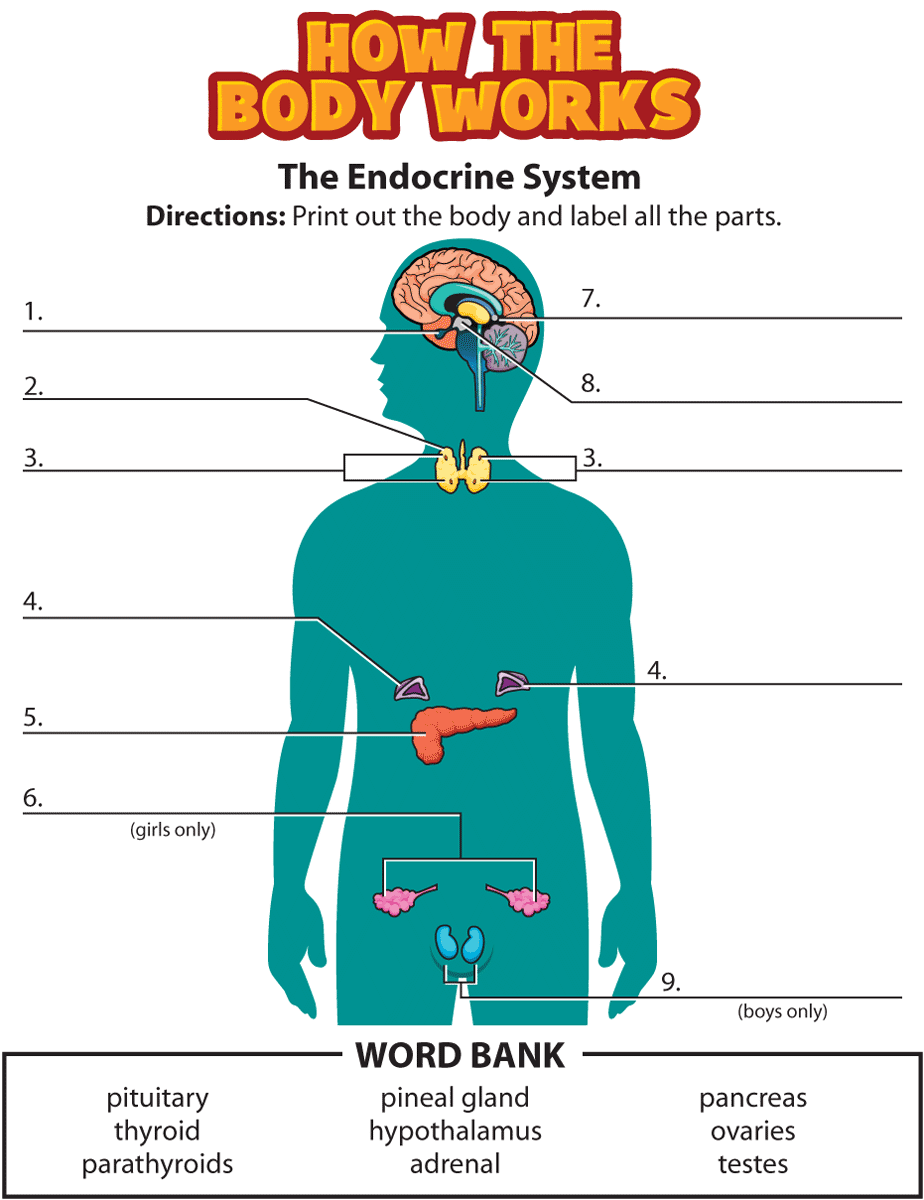
- Regulating metabolism
- Controlling heart and digestive function
- Aiding brain and nerve development
- Affecting muscle control and mood
The thyroid’s activity is, in turn, regulated by the pituitary gland, the so-called “master gland” that oversees the coordination of various hormone-producing glands.
The Pituitary Gland: The Body’s Command Center
Nestled at the base of the brain, the pituitary gland is a small but mighty endocrine structure often referred to as the “master gland.” This is because it controls the production and release of hormones by other glands, including the:
- Thyroid
- Adrenal glands
- Testes
- Ovaries
The pituitary gland’s influence extends to a wide range of bodily functions, from temperature regulation and sleep patterns to emotional behavior and memory.
The Adrenal Glands: Guardians of Stress Response
Perched atop the kidneys, the adrenal glands are endocrine powerhouses responsible for producing an array of hormones, including:
- Cortisol, which helps the body respond to stress
- Aldosterone, which regulates blood pressure
- Adrenaline, which triggers the body’s “fight-or-flight” response
- Small amounts of sex hormones called androgens
These hormones play a vital role in maintaining blood sugar levels, burning fat and protein, and helping the body adapt to stressors.
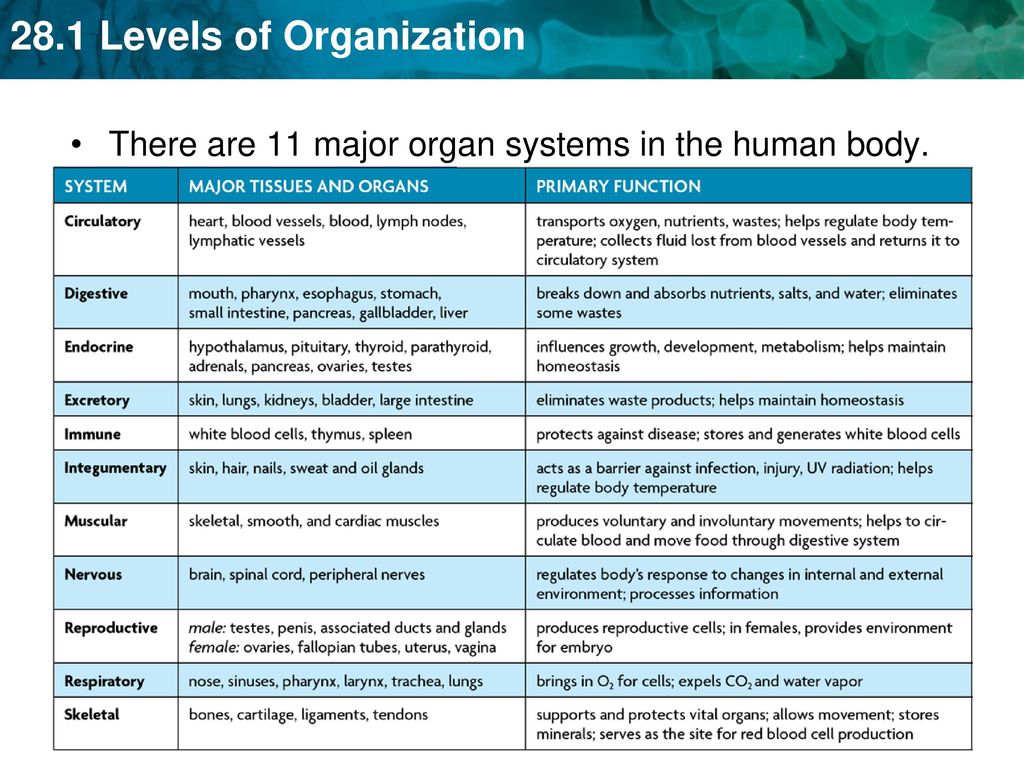
The Pancreas: A Dual-Purpose Gland
The pancreas is a unique organ that contains both exocrine and endocrine glands. While the exocrine portion produces digestive enzymes to break down food, the endocrine component is responsible for secreting hormones that regulate blood glucose levels, such as insulin and glucagon.
This dual function makes the pancreas a crucial player in the body’s metabolic processes, ensuring that the energy derived from the food we consume is properly utilized and maintained within healthy ranges.
What Are Glands? The Anatomy and Function
Glands are important organs located throughout the body. They produce and release substances that perform certain functions. Though you have many glands throughout your body, they fall into two types: endocrine and exocrine.
Endocrine and exocrine glands serve very different purposes in the body.
Endocrine glands
Endocrine glands are part of your endocrine system. They make hormones and release them into your bloodstream. These hormones control a number of important functions in your body, such as:
- your growth and development
- metabolism
- mood
- reproduction
Your endocrine glands include:
- adrenal glands
- pituitary gland
- hypothalamus
- thyroid
- pineal gland
There are also organs that contain endocrine tissue and act as glands. These include the:
- pancreas
- kidneys
- ovaries
- testes
Exocrine glands
Your exocrine glands produce other substances — not hormones — that are released through ducts to the exterior of your body, such as sweat, saliva, and tears.
The substances released by your exocrine glands play important roles in your body. They do things like help regulate your body temperature, protect your skin and eyes, and even help mothers feed babies by producing breast milk.
Your exocrine glands include:
- salivary
- sweat
- mammary
- sebaceous
- lacrimal
Lymph nodes are often referred to as glands, but they’re not true glands. They’re part of your immune system and help your body fight infection.
You have glands throughout your body, all varying in size and function. Here are a few examples of these glands and what they do.
Thyroid gland
Your thyroid gland is located in the front of your neck, just below your larynx. It measures approximately two inches and has a shape similar to a butterfly. It secretes hormones that affect virtually every tissue in your body. Thyroid hormones regulate your metabolism, heart, and digestive function. They also play a role in your brain and nerve development, muscle control, and mood.
Your thyroid function is controlled by your pituitary, which is a small gland at the base of your brain.
Pituitary gland
The pituitary gland is a pea-sized gland at the base of your brain, just behind the bridge of your nose. It’s controlled by the hypothalamus, which sits just above it. The pituitary gland is often called the master gland because it controls a number of other hormone glands, including the:
- thyroid
- adrenal gland
- testes
- ovaries
Hypothalamus
The hypothalamus functions as a communication center for your pituitary gland, sending signals and messages to the pituitary to produce and release hormones that trigger the production and release of other hormones.
Your hypothalamus influences a number of your body’s functions, including:
- temperature regulation
- food intake
- sleep and wakefulness
- thirst
- memory
- emotional behavior
Pineal gland
Your pineal gland is located deep in the center of your brain. Its function is not completely understood, but we do know that it secretes and regulates certain hormones, including melatonin. Melatonin helps regulate your sleep patterns, which are also known as circadian rhythms.
Its function is not completely understood, but we do know that it secretes and regulates certain hormones, including melatonin. Melatonin helps regulate your sleep patterns, which are also known as circadian rhythms.
The pineal gland also plays a role in the regulation of female hormones, which affect the menstrual cycle and fertility.
Adrenal glands
Your adrenal glands are located at the top of each kidney. They produce various hormones, some of which include:
- cortisol
- aldosterone
- adrenaline
- a small amount of sex hormones called androgens
The hormones produced by your adrenal glands have several important functions. They help your body:
- control blood sugar
- burn fat and protein
- regulate blood pressure
- react to stressors
Pancreas
The pancreas — a long, flat organ located in your abdomen — is made up of two types of glands: exocrine and endocrine. The pancreas is surrounded by the small intestine, stomach, liver, gallbladder, and spleen.
The pancreas plays an important role in converting the food you eat into fuel for your body’s cells. It does this by producing digestive enzymes that are released into your small bowel to break down and digest food. It also makes hormones that control your blood glucose levels.
Sweat glands
Your skin is covered in sweat glands of which there are two types: eccrine and apocrine. Your eccrine glands open directly onto your skin and regulate your body temperature by releasing water to the surface of your skin when your body temperature rises.
Apocrine glands open into the hair follicle and are found in hair-bearing areas, such as the skin, armpits, and groin. These glands secrete a milky fluid, usually as a response to stress. Your body also contains modified apocrine glands:
- on the eyelids
- on the areola and nipples
- in the nose
- in the ears
Sebaceous glands
Sebaceous glands are located throughout your skin, though there are few on your hands and feet and none on your palms and soles. They secrete an oily substance called sebum that lubricates your skin.
They secrete an oily substance called sebum that lubricates your skin.
Most of these glands release onto a hair follicle, though a few open directly onto the skin’s surface, such as Meibomian glands on the eyelids, Fordyce spots on the genitals an upper lip, and Tyson glands on the foreskin.
These glands perform a few functions in your body, such as:
- regulating your body temperature by working with your sweat glands
- helping your skin retain moisture
- helping fight infection caused by bacteria and fungi
Salivary glands
Your salivary glands are located in your mouth. You have hundreds of small glands located throughout your:
- tongue
- palate
- lips
- cheeks
You have three pairs of major salivary glands, including the:
- parotid glands, located in front of and just below your ears
- sublingual glands, located just under your tongue
- submandibular glands, located below your jaw
Salivary glands produce saliva and empty into your mouth through ducts. Saliva serves a few important purposes, including moistening your food to help you chew, swallow, and digest it. Saliva also contains antibodies that kill germs to keep your mouth healthy.
Saliva serves a few important purposes, including moistening your food to help you chew, swallow, and digest it. Saliva also contains antibodies that kill germs to keep your mouth healthy.
Mammary glands
Mammary glands, which are a type of sweat gland, are responsible for the production of breastmilk. Males also have glandular tissue in the breasts, but estrogen produced during puberty triggers the growth of this tissue in females.
Hormonal changes during pregnancy signal the ducts to produce milk in preparation for the baby.
There are a number of different problems that can affect the glands. Depending on the glands affected, a person could experience symptoms that affect different parts of the body.
Thyroid disorders
Hypothyroidism and hyperthyroidism are common thyroid disorders. Hypothyroidism occurs because of an underactive thyroid that doesn’t produce enough thyroid hormones. Hyperthyroidism is the result of an overactive thyroid that produces too much thyroid hormone.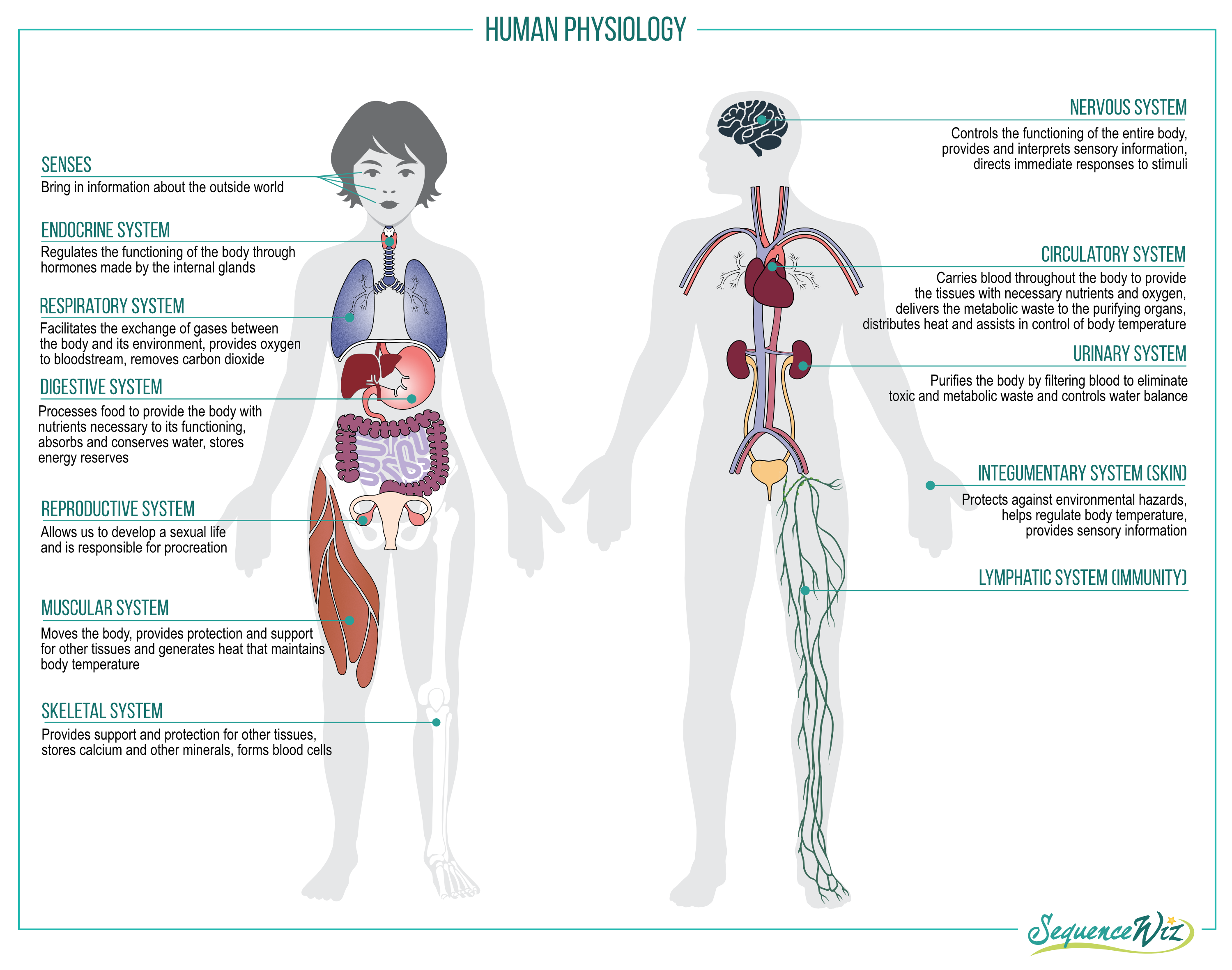 Both conditions can cause an enlarged thyroid gland, or goiter.
Both conditions can cause an enlarged thyroid gland, or goiter.
Hypothyroidism can also cause unintentional weight gain, fatigue, and a slow heart rate, while hyperthyroidism does the opposite, causing unintended weight loss, nervousness, and a rapid heart rate. Both conditions can usually be treated with medication to restore proper thyroid function.
Diabetes
A healthy pancreas releases insulin when blood sugar gets too high. Insulin causes your cells to convert sugar to use as energy or to store it as fat. In diabetes, your pancreas either doesn’t produce insulin or doesn’t use it properly, leading to high blood sugar.
Diabetes can lead to a number of serious complications, including nerve damage, heart disease, and stroke. There are two different types of diabetes. Common symptoms include increased thirst, changes in weight, and frequent or recurring infections.
Treatment depends on the type of diabetes, but may consist of medication, insulin, and lifestyle changes.
Adrenal gland disorders
Adrenal gland disorders are caused by too much or too little of a certain hormone, such as cortisol. Cushing syndrome, an adrenal disorder caused by high cortisol, causes weight gain, a fatty hump between the shoulders, and high blood pressure. It’s often caused by prolonged use of corticosteroids.
Adrenal insufficiency, which happens when your body produces too little cortisol, and sometimes aldosterone, can cause decreased appetite, weight loss, and muscle weakness. Adrenal disorders can be treated using medication, surgery, and other therapies, or by stopping corticosteroids.
Salivary gland disorders
The formation of stones or tumors, infections, and certain medical conditions, such as autoimmune disorders and HIV and AIDs, can prevent the salivary glands from functioning properly. When your salivary glands don’t produce enough saliva, it can affect chewing, swallowing, and taste. It can also increase your risk of oral infections, such as cavities.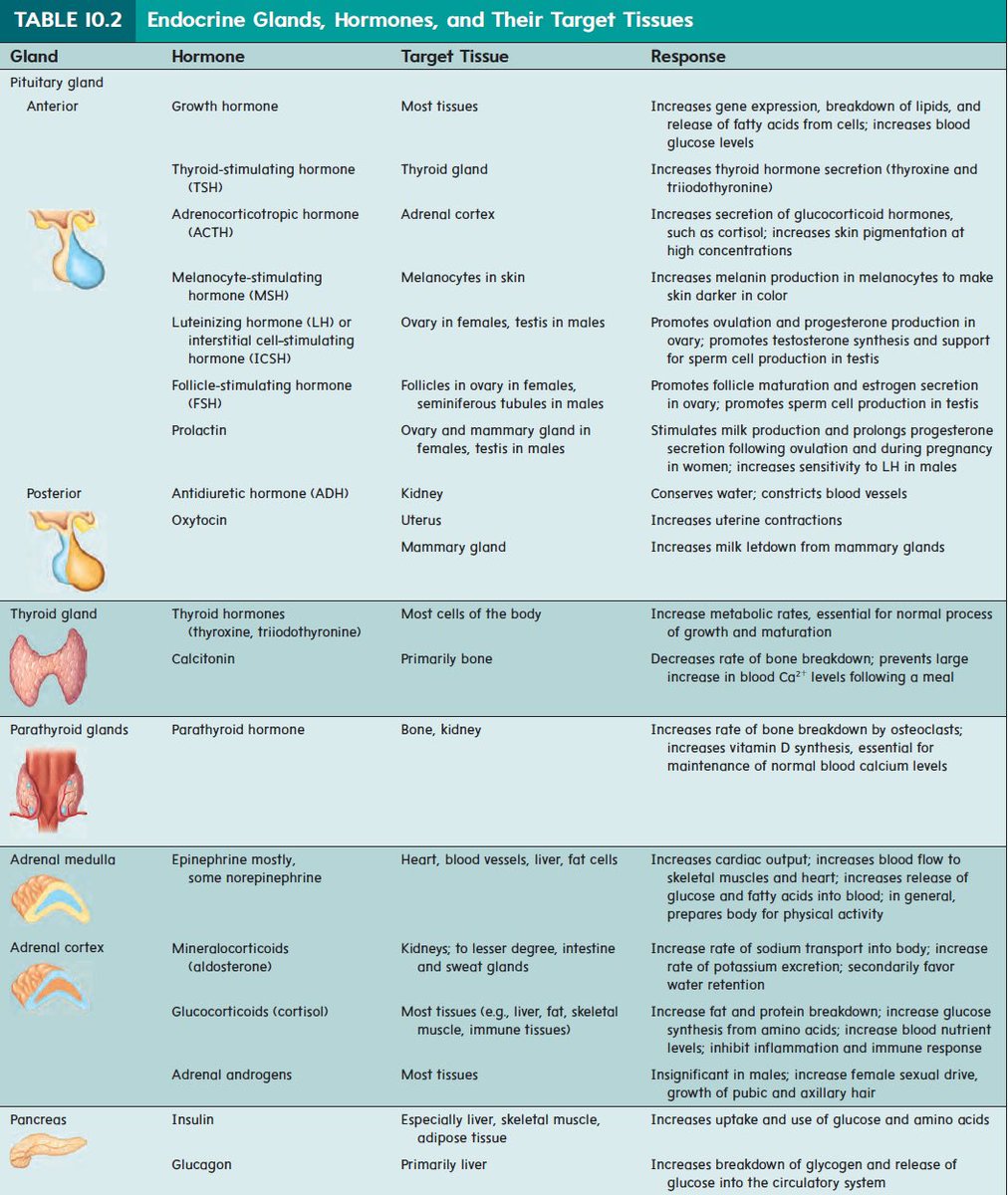
Symptoms often include pain or swelling in your face, neck, or under your tongue, and dry mouth. Treatment of salivary gland disorders depends on the cause and may include medication or surgery.
Problems with your glands can cause vague symptoms. See your doctor if you notice any unusual swelling or changes in your appearance, such as unexplained weight changes. Also see your doctor if you develop changes in your heart rate or palpitations.
Fatigue, weakness, and changes in your appetite lasting over two weeks should also prompt a visit to the doctor.
Your glands play a role in almost every bodily function. Endocrine glands secrete hormones to your bloodstream. Exocrine glands secrete other substances to your body’s exterior.
A problem with one of your glands needs to be treated to prevent serious complications. See your doctor if you suspect you have a gland disorder.
What Are Glands? The Anatomy and Function
Glands are important organs located throughout the body. They produce and release substances that perform certain functions. Though you have many glands throughout your body, they fall into two types: endocrine and exocrine.
They produce and release substances that perform certain functions. Though you have many glands throughout your body, they fall into two types: endocrine and exocrine.
Endocrine and exocrine glands serve very different purposes in the body.
Endocrine glands
Endocrine glands are part of your endocrine system. They make hormones and release them into your bloodstream. These hormones control a number of important functions in your body, such as:
- your growth and development
- metabolism
- mood
- reproduction
Your endocrine glands include:
- adrenal glands
- pituitary gland
- hypothalamus
- thyroid
- pineal gland
There are also organs that contain endocrine tissue and act as glands. These include the:
- pancreas
- kidneys
- ovaries
- testes
Exocrine glands
Your exocrine glands produce other substances — not hormones — that are released through ducts to the exterior of your body, such as sweat, saliva, and tears.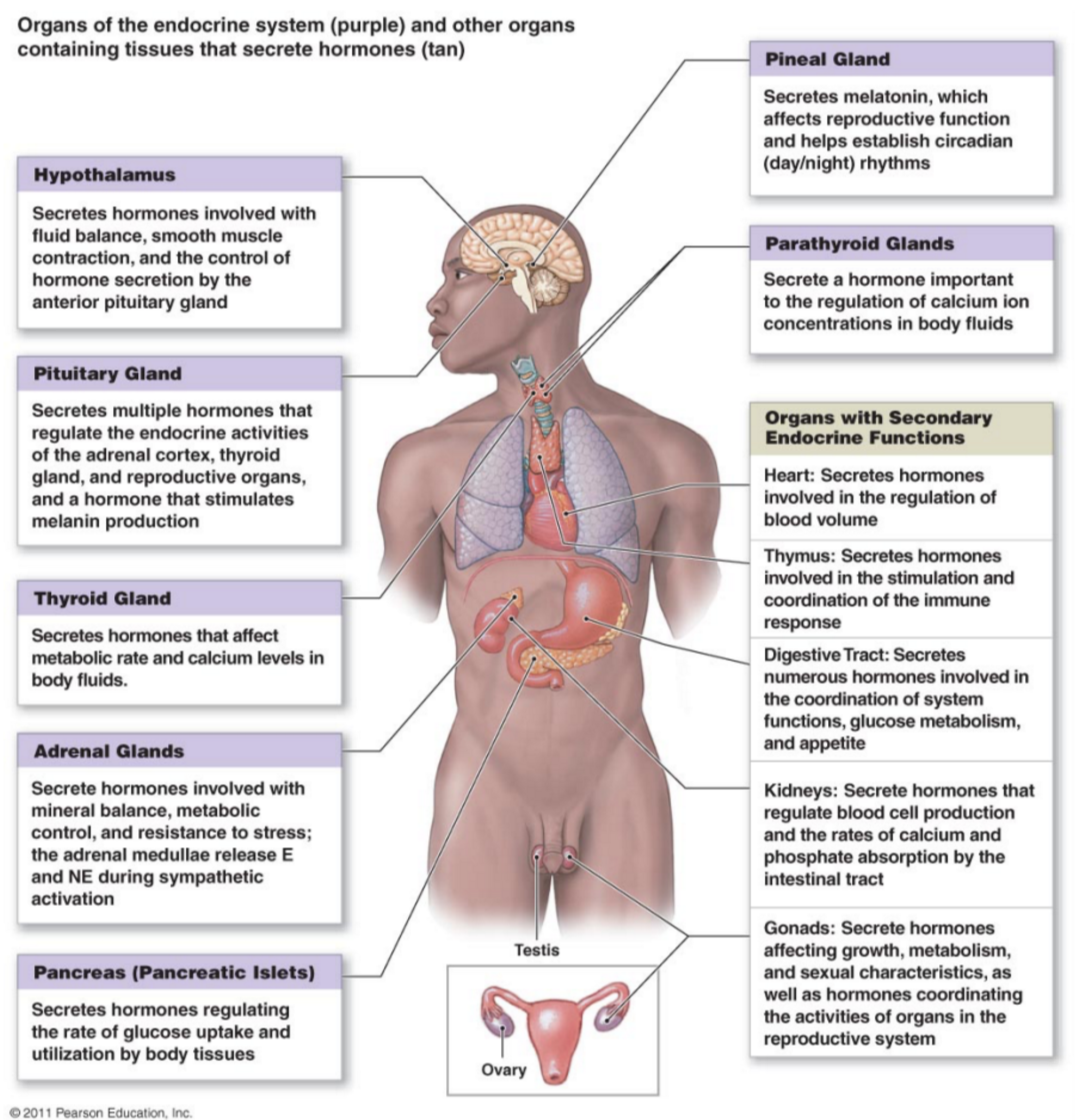
The substances released by your exocrine glands play important roles in your body. They do things like help regulate your body temperature, protect your skin and eyes, and even help mothers feed babies by producing breast milk.
Your exocrine glands include:
- salivary
- sweat
- mammary
- sebaceous
- lacrimal
Lymph nodes are often referred to as glands, but they’re not true glands. They’re part of your immune system and help your body fight infection.
You have glands throughout your body, all varying in size and function. Here are a few examples of these glands and what they do.
Thyroid gland
Your thyroid gland is located in the front of your neck, just below your larynx. It measures approximately two inches and has a shape similar to a butterfly. It secretes hormones that affect virtually every tissue in your body. Thyroid hormones regulate your metabolism, heart, and digestive function. They also play a role in your brain and nerve development, muscle control, and mood.
Your thyroid function is controlled by your pituitary, which is a small gland at the base of your brain.
Pituitary gland
The pituitary gland is a pea-sized gland at the base of your brain, just behind the bridge of your nose. It’s controlled by the hypothalamus, which sits just above it. The pituitary gland is often called the master gland because it controls a number of other hormone glands, including the:
- thyroid
- adrenal gland
- testes
- ovaries
Hypothalamus
The hypothalamus functions as a communication center for your pituitary gland, sending signals and messages to the pituitary to produce and release hormones that trigger the production and release of other hormones.
Your hypothalamus influences a number of your body’s functions, including:
- temperature regulation
- food intake
- sleep and wakefulness
- thirst
- memory
- emotional behavior
Pineal gland
Your pineal gland is located deep in the center of your brain. Its function is not completely understood, but we do know that it secretes and regulates certain hormones, including melatonin. Melatonin helps regulate your sleep patterns, which are also known as circadian rhythms.
Its function is not completely understood, but we do know that it secretes and regulates certain hormones, including melatonin. Melatonin helps regulate your sleep patterns, which are also known as circadian rhythms.
The pineal gland also plays a role in the regulation of female hormones, which affect the menstrual cycle and fertility.
Adrenal glands
Your adrenal glands are located at the top of each kidney. They produce various hormones, some of which include:
- cortisol
- aldosterone
- adrenaline
- a small amount of sex hormones called androgens
The hormones produced by your adrenal glands have several important functions. They help your body:
- control blood sugar
- burn fat and protein
- regulate blood pressure
- react to stressors
Pancreas
The pancreas — a long, flat organ located in your abdomen — is made up of two types of glands: exocrine and endocrine. The pancreas is surrounded by the small intestine, stomach, liver, gallbladder, and spleen.
The pancreas plays an important role in converting the food you eat into fuel for your body’s cells. It does this by producing digestive enzymes that are released into your small bowel to break down and digest food. It also makes hormones that control your blood glucose levels.
Sweat glands
Your skin is covered in sweat glands of which there are two types: eccrine and apocrine. Your eccrine glands open directly onto your skin and regulate your body temperature by releasing water to the surface of your skin when your body temperature rises.
Apocrine glands open into the hair follicle and are found in hair-bearing areas, such as the skin, armpits, and groin. These glands secrete a milky fluid, usually as a response to stress. Your body also contains modified apocrine glands:
- on the eyelids
- on the areola and nipples
- in the nose
- in the ears
Sebaceous glands
Sebaceous glands are located throughout your skin, though there are few on your hands and feet and none on your palms and soles. They secrete an oily substance called sebum that lubricates your skin.
They secrete an oily substance called sebum that lubricates your skin.
Most of these glands release onto a hair follicle, though a few open directly onto the skin’s surface, such as Meibomian glands on the eyelids, Fordyce spots on the genitals an upper lip, and Tyson glands on the foreskin.
These glands perform a few functions in your body, such as:
- regulating your body temperature by working with your sweat glands
- helping your skin retain moisture
- helping fight infection caused by bacteria and fungi
Salivary glands
Your salivary glands are located in your mouth. You have hundreds of small glands located throughout your:
- tongue
- palate
- lips
- cheeks
You have three pairs of major salivary glands, including the:
- parotid glands, located in front of and just below your ears
- sublingual glands, located just under your tongue
- submandibular glands, located below your jaw
Salivary glands produce saliva and empty into your mouth through ducts. Saliva serves a few important purposes, including moistening your food to help you chew, swallow, and digest it. Saliva also contains antibodies that kill germs to keep your mouth healthy.
Saliva serves a few important purposes, including moistening your food to help you chew, swallow, and digest it. Saliva also contains antibodies that kill germs to keep your mouth healthy.
Mammary glands
Mammary glands, which are a type of sweat gland, are responsible for the production of breastmilk. Males also have glandular tissue in the breasts, but estrogen produced during puberty triggers the growth of this tissue in females.
Hormonal changes during pregnancy signal the ducts to produce milk in preparation for the baby.
There are a number of different problems that can affect the glands. Depending on the glands affected, a person could experience symptoms that affect different parts of the body.
Thyroid disorders
Hypothyroidism and hyperthyroidism are common thyroid disorders. Hypothyroidism occurs because of an underactive thyroid that doesn’t produce enough thyroid hormones. Hyperthyroidism is the result of an overactive thyroid that produces too much thyroid hormone. Both conditions can cause an enlarged thyroid gland, or goiter.
Both conditions can cause an enlarged thyroid gland, or goiter.
Hypothyroidism can also cause unintentional weight gain, fatigue, and a slow heart rate, while hyperthyroidism does the opposite, causing unintended weight loss, nervousness, and a rapid heart rate. Both conditions can usually be treated with medication to restore proper thyroid function.
Diabetes
A healthy pancreas releases insulin when blood sugar gets too high. Insulin causes your cells to convert sugar to use as energy or to store it as fat. In diabetes, your pancreas either doesn’t produce insulin or doesn’t use it properly, leading to high blood sugar.
Diabetes can lead to a number of serious complications, including nerve damage, heart disease, and stroke. There are two different types of diabetes. Common symptoms include increased thirst, changes in weight, and frequent or recurring infections.
Treatment depends on the type of diabetes, but may consist of medication, insulin, and lifestyle changes.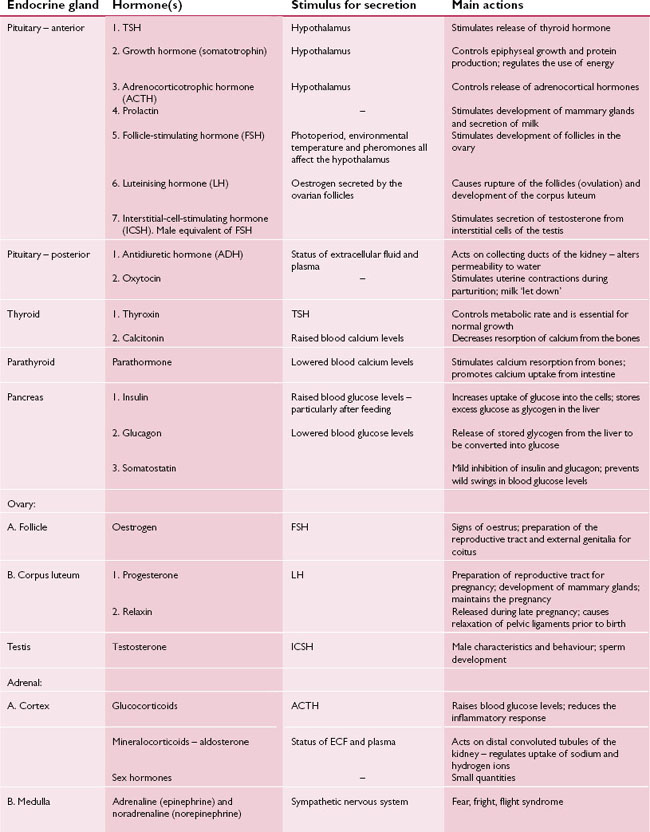
Adrenal gland disorders
Adrenal gland disorders are caused by too much or too little of a certain hormone, such as cortisol. Cushing syndrome, an adrenal disorder caused by high cortisol, causes weight gain, a fatty hump between the shoulders, and high blood pressure. It’s often caused by prolonged use of corticosteroids.
Adrenal insufficiency, which happens when your body produces too little cortisol, and sometimes aldosterone, can cause decreased appetite, weight loss, and muscle weakness. Adrenal disorders can be treated using medication, surgery, and other therapies, or by stopping corticosteroids.
Salivary gland disorders
The formation of stones or tumors, infections, and certain medical conditions, such as autoimmune disorders and HIV and AIDs, can prevent the salivary glands from functioning properly. When your salivary glands don’t produce enough saliva, it can affect chewing, swallowing, and taste. It can also increase your risk of oral infections, such as cavities.
Symptoms often include pain or swelling in your face, neck, or under your tongue, and dry mouth. Treatment of salivary gland disorders depends on the cause and may include medication or surgery.
Problems with your glands can cause vague symptoms. See your doctor if you notice any unusual swelling or changes in your appearance, such as unexplained weight changes. Also see your doctor if you develop changes in your heart rate or palpitations.
Fatigue, weakness, and changes in your appetite lasting over two weeks should also prompt a visit to the doctor.
Your glands play a role in almost every bodily function. Endocrine glands secrete hormones to your bloodstream. Exocrine glands secrete other substances to your body’s exterior.
A problem with one of your glands needs to be treated to prevent serious complications. See your doctor if you suspect you have a gland disorder.
The role of the thyroid gland for our body
Almost none of us think about the important role thyroid hormones play in our body, how they affect a person, and what their norm should be. This is especially important in our present stressful time. Enlarged or reduced thyroid gland works in different ways. Therefore, it is necessary to be examined in time to identify violations of the thyroid gland. The importance of the thyroid gland is enormous for our well-being and overall health.
This is especially important in our present stressful time. Enlarged or reduced thyroid gland works in different ways. Therefore, it is necessary to be examined in time to identify violations of the thyroid gland. The importance of the thyroid gland is enormous for our well-being and overall health.
What is the role of the thyroid gland in our body
The thyroid gland is the largest endocrine organ of the human body. This is the main “catalyst” indicator of the negative impact on our human body of the external environment.
The main function of thyroid hormones is to maintain the basic life metabolism, influence the normal development and maintenance of the functions of all body systems. In a word, in order to feel good, hormones must be normal .
What is the effect of thyroid dysfunction
Every day we are exposed to stress related to education, work, personal life, but you probably do not realize how closely this stress is connected with your body. And the number one target is our endocrine glands. Thyroid hormones have a special effect on our body, so the rate of indicators is very important.
And the number one target is our endocrine glands. Thyroid hormones have a special effect on our body, so the rate of indicators is very important.
The role of these biologically active substances of the thyroid gland is the ability to start the process of catabolism of proteins, fats and carbohydrates, which, in turn, is the basis of the life process of our body. Therefore, a decrease or increase in the required level of hormones significantly affects the condition of a person and his well-being.
Enlarged or reduced thyroid gland
The size does not really matter, what matters is the dysfunction of the thyroid gland.
The main thing, , is that the structure of the organ is not disturbed and there is the correct production of hormones, the absence of neoplasms, cysts, calcifications.
First, get an ultrasound of the thyroid gland from a qualified doctor, take blood tests to determine the level of hormones.
Make an appointment
What are the symptoms associated with dysfunction of the thyroid gland?
1. depressed mood, drowsiness, weakness and fatigue, weight loss or gain, which is not associated with
depressed mood, drowsiness, weakness and fatigue, weight loss or gain, which is not associated with
changes in diet, regular headache.
2. pain in the heart, palpitations or, on the contrary, a feeling of “stopping” the heart, a change in blood pressure.
3. dysfunction of the gastrointestinal tract: constipation, flatulence, abdominal pain.
4. dry or flaky skin, hair loss or increased hair growth, dermatitis.
5. an increase in the number of infectious diseases, reduced immunity.
Remember that the occurrence of almost any physical disease can be associated with
thyroid dysfunction, so screening for hormones is necessary.
Moreover, the pathology of the thyroid gland is far from the last place among diseases of older age. Now you know, the importance of the thyroid gland for health is great.
We recommend that you undergo the following tests times a year:
Ultrasound of the thyroid gland.
Blood test for hormones (thyroid-stimulating hormone, T3 and T4).
Endocrinologist’s consultation.
Pay special attention to young children and adolescents, contact a pediatric endocrinologist in time.
There was a question, what is the price, call, make an appointment
+38(096)43−43−848
Take care and take care of your health. Our doctors are ready to help.
Essential trace elements: what is it, their role in human life
General
The mineral composition of the intracellular fluid is strictly maintained at a certain level.
Elements, together with water, are building materials, cofactors and catalysts for biochemical reactions, stabilizers of proteins and enzymes, ensuring the constancy of osmotic pressure, acid-base balance, absorption, secretion, hematopoiesis, bone formation, blood clotting. Due to the presence of elements, the process of muscle contraction, nerve conduction and intracellular respiration is carried out. Chemical elements in the body are in the form of various compounds and salts, their effect on the body is determined by the dose of the element. Each element has its own physiological working range of concentrations, which ensures the normal course of physiological reactions in the body.
Chemical elements in the body are in the form of various compounds and salts, their effect on the body is determined by the dose of the element. Each element has its own physiological working range of concentrations, which ensures the normal course of physiological reactions in the body.
Disturbed ecology, increased pace of life with the inevitable increase in stressful situations, food processing methods that “kill” biologically active substances lead to a violation of metal-ligand homeostasis and a shift in balance towards an increase or decrease in the concentration of the element. The accumulation of elements or their deficiency contributes to the activation of alternative metabolic pathways, which in some cases lead to pathological conditions.
Chemical elements are classified according to their role in the body. 98% of the human body consists of organic elements: H, C, N, O. Together with the inorganic elements Na, Mg, K, Ca, P, S, Cl, they form the basis of cells and tissues, performing a structure-forming function. Essential or vital trace elements include Mn, Fe, Co, Ni, Cu, Zn, Mo, Se, I; in their absence, the basic reactions of cell division and reproduction are disrupted. Conditionally essential trace elements include Li, V, Cr, B, F, Si, As, their role has not been fully determined. There are also “toxic metals” that, in minimal concentrations, can have a stimulating effect on the body, but in high concentrations exhibit toxic effects.
Essential or vital trace elements include Mn, Fe, Co, Ni, Cu, Zn, Mo, Se, I; in their absence, the basic reactions of cell division and reproduction are disrupted. Conditionally essential trace elements include Li, V, Cr, B, F, Si, As, their role has not been fully determined. There are also “toxic metals” that, in minimal concentrations, can have a stimulating effect on the body, but in high concentrations exhibit toxic effects.
Trace elements make up only 0.02% of the body, but they are able to change the course of the most important biological reactions. Analysis of hair or urine reveals excessive accumulation of trace elements or their deficiency. The content of trace elements in hair reflects the microelement status of the body as a whole, therefore, hair samples are an integral indicator of mineral metabolism. Hair helps to diagnose chronic diseases when they do not yet manifest themselves.
Iron (Fe)
Iron is a vital element for the body. Iron is part of the heme-containing proteins (hemoglobin and myoglobin) and is involved in the transport of oxygen. Iron is also a part of cytochromes (complex proteins belonging to the class of chromoproteins) involved in the processes of tissue respiration.
Iron is also a part of cytochromes (complex proteins belonging to the class of chromoproteins) involved in the processes of tissue respiration.
The total iron content in the human body is 3-5 g. Of this amount, 57% is in blood hemoglobin, 23% is in tissues and tissue enzymes (ferritin and hemosiderin), and the remaining 20% is deposited in the liver, spleen, bone brain, muscles and represent the “physiological reserve” of iron. Iron exists in two forms: oxidized (Fe3+) and reduced (Fe2+). The reduced form is better absorbed by the body. Only 10% of the incoming iron is absorbed in the intestine.
Physiological iron requirement:
- men: 8–10 mg/day;
- women: 15–20 mg/day;
- pregnant women: 30–40 mg/day;
- children: 4–18 mg/day.
In large quantities, the reduced form of iron (heme iron) is found in: pork liver, beef kidneys, heart and liver. The oxidized form of iron (non-heme iron) is found in non-animal foods: wholemeal flour, dried peaches, nuts, beans, asparagus, oatmeal.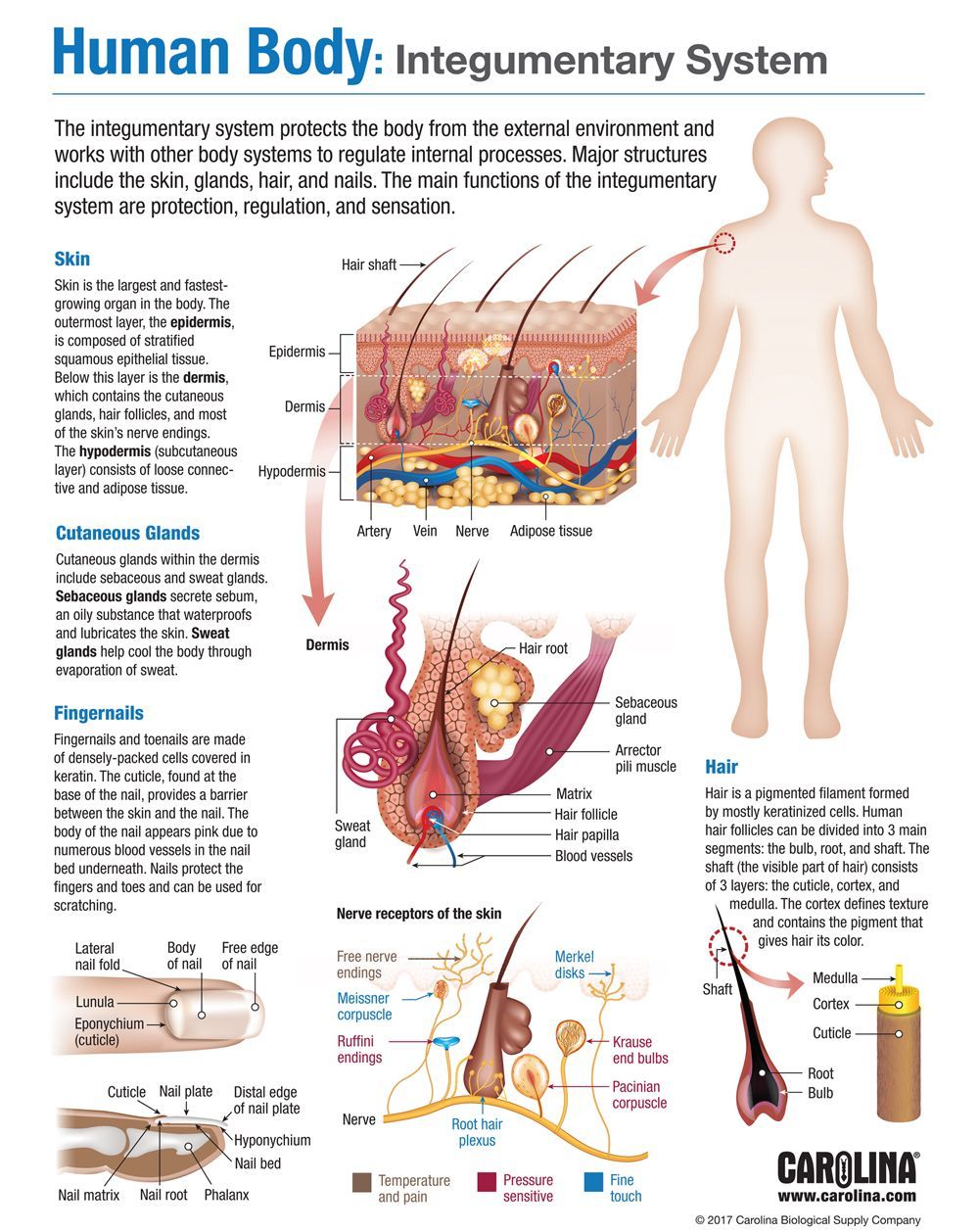
Iron deficiency leads to severe disorders, the most important of which is iron deficiency anemia. Iron deficiency anemia can lead to heart failure.
Excessive accumulation of iron leads to metal deposition in organs (liver, pancreas, joints, heart). Symptoms of iron poisoning include vomiting, diarrhea, low blood pressure, CNS paralysis, and inflammation of the kidneys. With iron treatment, constipation may develop, as iron binds hydrogen sulfide, which weakens intestinal motility. An excess of iron in the body can lead to a deficiency of copper, zinc, chromium and calcium, as well as an excess of cobalt.
Iodine (I)
Iodine is essential at all stages of life. The period of infancy and early childhood are critical for iodine deficiency. Iodine is part of the thyroid hormones thyroxine (T 4 ) and triiodothyronine (T 3 ). Iodine is necessary for the growth and differentiation of cells of all tissues of the human body, intracellular respiration, regulation of transmembrane transport of sodium and hormones.
The total amount of iodine in the body is 25 mg, of which 15 mg accumulates in the thyroid gland. A significant amount of iodine is found in the liver, kidneys, skin, hair, nails, ovaries and prostate gland.
Physiological requirement for iodine:
- adults: 100–150 mcg/day;
- pregnant: 175–200 mcg/day;
- children: 60 to 150 mcg/day.
A rich source of iodine are algae, vegetables grown on soil enriched with iodine, onions, seafood.
With insufficient intake of iodine in adults, the size of the thyroid gland increases, the basal metabolism slows down, and a drop in blood pressure is observed. In children, iodine deficiency is accompanied by drastic changes in the entire structure of the body: the child lags behind in mental and physical development.
An excess of iodine in the body is observed in hyperthyroidism. Graves’ disease develops, accompanied by exophthalmos, tachycardia, irritability, muscle weakness, sweating, emaciation, and a tendency to diarrhea. An increase in basal metabolism leads to hyperthermia, dystrophic changes in the skin and its appendages, early graying, depigmentation of the skin in limited areas (vitiligo), and muscle atrophy.
An increase in basal metabolism leads to hyperthermia, dystrophic changes in the skin and its appendages, early graying, depigmentation of the skin in limited areas (vitiligo), and muscle atrophy.
Manganese (Mn)
Important for reproductive functions and normal functioning of the central nervous system. Manganese is involved in the synthesis of neurotransmitters, improves muscle reflexes, ensures the development of connective and bone tissue, increases fat utilization, enhances the effects of insulin.
3-5% of the incoming manganese is absorbed. Tubular bones and liver, pancreas are richest in manganese. Manganese is found in cells rich in mitochondria.
Physiological requirement for manganese:
- adults: 2–5 mg/day;
- for children is 2 times higher.
Particularly rich in manganese are tea, vegetable juices, whole grains, nuts, green leafy vegetables, peas, and beets.
With a lack of manganese, ossification processes throughout the skeleton are disrupted, tubular bones thicken and shorten, joints are deformed. The reproductive function of the ovaries and testicles is impaired.
The reproductive function of the ovaries and testicles is impaired.
An excess of manganese increases the deficiency of magnesium and copper.
Copper (Cu)
Copper is involved in maintaining the elasticity of ligaments, tendons, skin and walls of the lung alveoli, capillary walls, and bone strength. Copper is part of the protective sheaths of nerve fibers, is involved in pigmentation processes, as it is part of melanin. Copper affects carbohydrate metabolism by enhancing the processes of glucose oxidation and inhibition of the breakdown of muscle and liver glycogen. Copper has anti-inflammatory effects, helps in the fight against bacterial agents. Copper is a cofactor for antioxidant defense enzymes and helps neutralize free radicals.
The total copper content in the human body is approximately 100–150 mg. Best of all, the body absorbs divalent copper. In the small intestine, up to 95% of the copper supplied with food is absorbed. The main “depot” of copper in the body is the liver, since it synthesizes the copper carrier protein ceruloplasmin.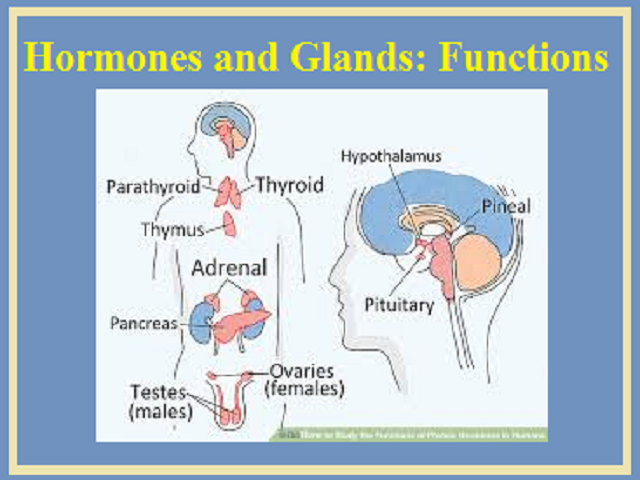
Physiological requirement for copper:
- adults: 1 mg/day;
- children: 0.5 to 1 mg/day.
Copper is found in vegetables, legumes, seafood, and apples.
With a lack of copper in the body, the following are observed: growth retardation, anemia, dermatosis, hair depigmentation, partial baldness, loss of appetite, severe emaciation, a decrease in hemoglobin levels, atrophy of the heart muscle. An excess of copper leads to a deficiency of zinc and molybdenum, as well as manganese.
Molybdenum (Mo)
Promotes the metabolism of carbohydrates and fats, is an important part of the enzyme responsible for the utilization of iron, and therefore helps to prevent anemia. Takes part in the exchange of uric acid, the inclusion of fluoride in the composition of tooth enamel, hematopoiesis.
The bioavailability of molybdenum is 50%. Molybdenum is not deposited in the body, but is distributed between blood cells.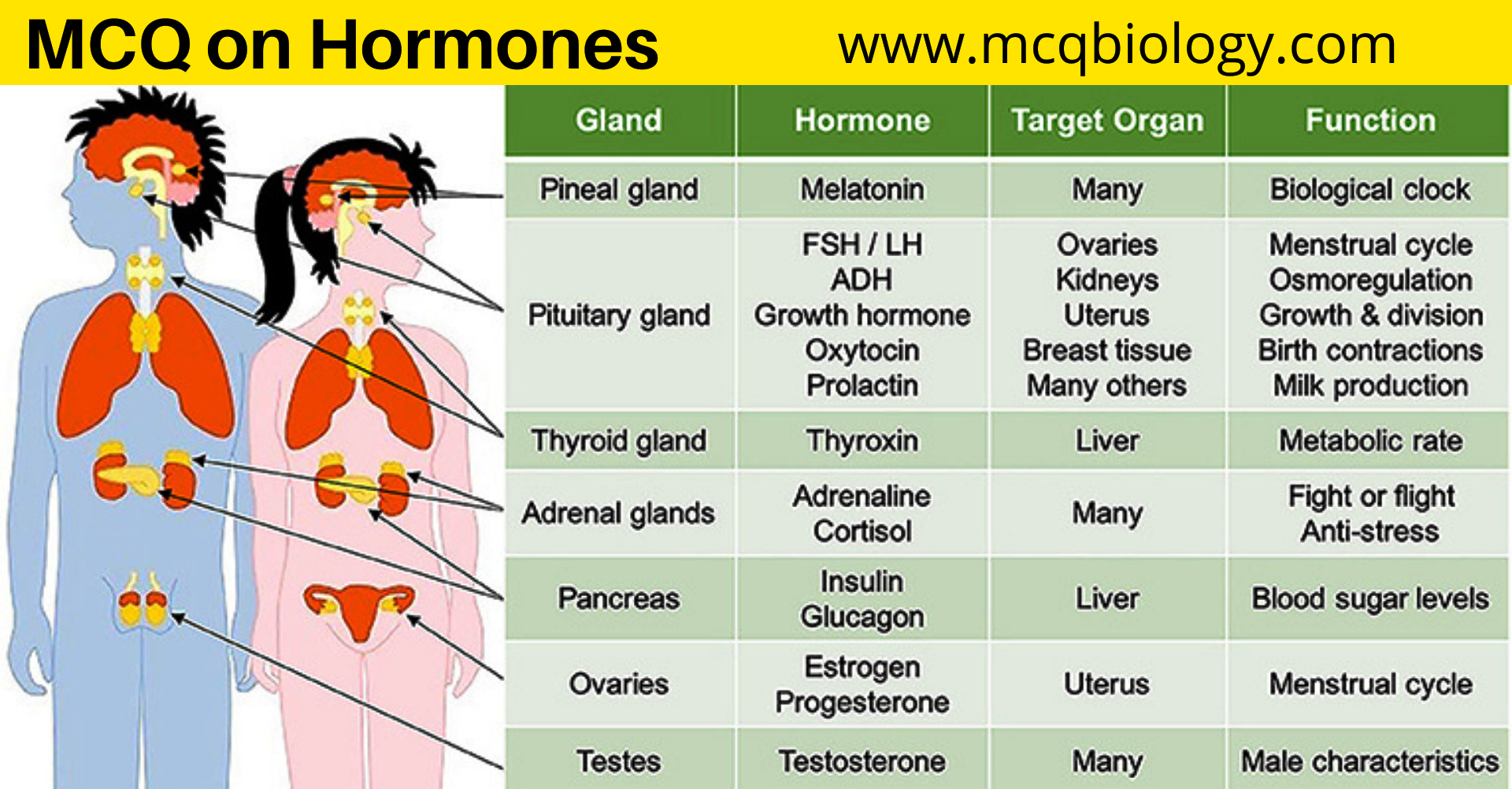
Physiological requirement for molybdenum:
- adults: 45–100 mcg/day;
- children: 0.5 to 1 mg/day.
Found in dark green leafy vegetables, whole grains, legumes. Manifestations of insufficiency are poorly understood. Increased content in the body is very rare.
Selenium (Se)
An element of antioxidant protection, it combines well with vitamin E. Selenium helps maintain proper tissue elasticity. Selenium enhances immunity, therefore it is actively used in oncological practice, in the treatment of hepatitis, pancreatitis, cardiomyopathies. Selenium protects the body from heavy metals.
Absorbed in the small intestine, deposited in the kidneys, liver, bone marrow.
Physiological need for selenium:
- women: 50 mcg/day;
- pregnant: 65 mcg/day;
- men: 70 mcg/day;
- children: 10-50 mcg/day.
In its pure form, it is rarely found in nature, mainly as an admixture with sulfurous metals.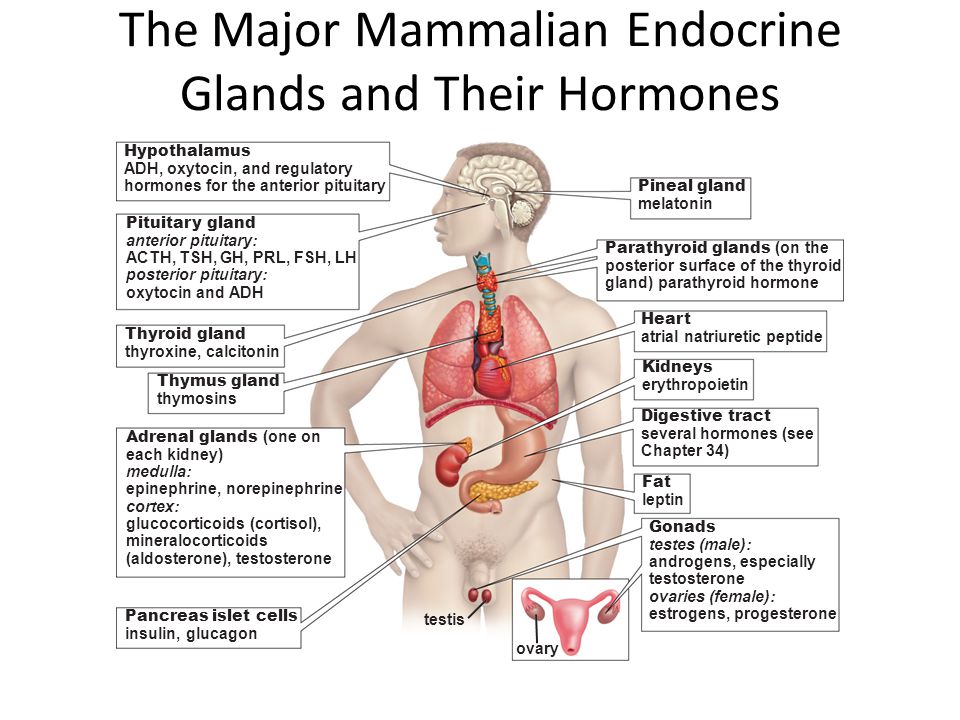 Present in garlic, lard, bran, porcini mushrooms, vegetable oils, seaweed.
Present in garlic, lard, bran, porcini mushrooms, vegetable oils, seaweed.
With selenium deficiency, arsenic and cadmium accumulate in the body, which, in turn, further aggravate its deficiency.
An excess of selenium leads to hepato- and cholecystopathies, changes in the functioning of the neuromuscular apparatus (pain in the limbs, convulsions, numbness). Excess can lead to calcium deficiency.
Zinc (Zn)
Zinc is part of more than 300 enzymes, which explains its effect on carbohydrate, fat and protein metabolism, redox processes, and regulation of gene activity. Zinc is associated with the proper functioning of the reproductive, neurological, immune systems, gastrointestinal tract and skin. The presence of the trace element is important for normal spermatogenesis, organogenesis, the functioning of neurotransmitters and pancreatic enzymes, the proper development of the thymus, epithelialization of wounds in the healing process, and the sense of taste.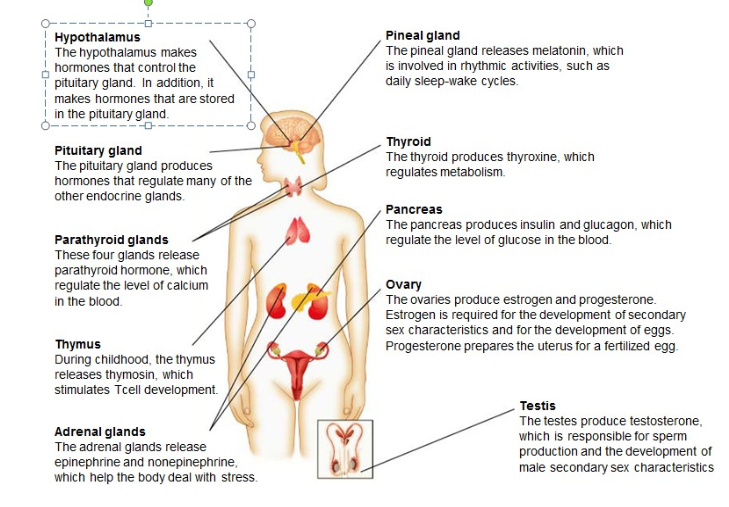
The body contains about 1.5–3 g of zinc. Zinc is absorbed in the small intestine. Copper is a zinc antagonist and competes with zinc for intestinal absorption. 99% of zinc is intracellular, 1% – in plasma. Zinc is present in all organs and tissues, but to a greater extent, zinc is deposited by the prostate gland, testicles, muscles, skin, and hair.
The physiological requirement for zinc is: 12 mg/day for adults, 3–2 mg/day for children.
The most rich in zinc are yeast, wheat, rice and rye bran, grains of cereals and legumes, cocoa, seafood, mushrooms, onions, potatoes.
Zinc deficiency results in growth retardation, overexcitation of the nervous system and rapid fatigue. Skin lesions occur with thickening of the epidermis, swelling of the skin, mucous membranes of the mouth and esophagus, weakening and hair loss. Insufficient intake of zinc leads to infertility. Zinc deficiency can lead to increased accumulation of iron, copper, cadmium, and lead.
Zinc poisoning causes fibrotic degeneration of the pancreas. Excess zinc stunts growth and impairs bone mineralization.
Cobalt (Co)
Included in vitamin B 12 , participates in the metabolism of thyroid hormones, inhibits iodine metabolism, regulates hematopoiesis, enhances iron absorption.
1.5 g of cobalt in the body. Bioavailability of cobalt 20%. In the body, cobalt is deposited in the liver, bone tissue and muscles.
The physiological requirement for cobalt is: 10 mcg/day for adults.
Cobalt is found in liver, milk, vegetables.
Cobalt deficiency is associated with B 12 deficiency anemia, vegetarianism or parasitic infestation. An excess of cobalt is observed with cobalt intoxication (harmful production, destruction of orthopedic implants).
Nickel (Ni)
Nickel prolongs the effects of insulin, participates in the oxidation of ascorbic acid, accelerates the formation of disulfide groups.
